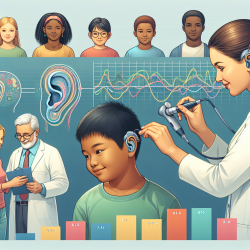Introduction
In the ever-evolving landscape of education, the integration of comprehensive wellness policies is crucial to support the multifaceted development of children. The research article titled "Expanding School Wellness Policies to Encompass the Whole School, Whole Community, Whole Child Model" provides a robust framework for enhancing school wellness policies. This blog post will delve into the key findings of this research and offer actionable insights for practitioners aiming to improve their skills and outcomes for children.
The WSCC Model: A Comprehensive Approach
The Whole School, Whole Community, Whole Child (WSCC) model, launched by the Centers for Disease Control and Prevention (CDC) and ASCD, emphasizes the integration of health-promoting practices across ten domains. These include health education, physical education, nutrition, social and emotional climate, and more. By adopting the WSCC model, schools can foster environments that are not only conducive to learning but also supportive of the overall well-being of students.
Implementation Tools and Strategies
To effectively implement the WSCC model, the research highlights several tools and strategies:
- Wellness School Assessment Tool (WellSAT): This quantitative measure helps districts evaluate their current policies for alignment with the WSCC model.
- WSCC Policy and Practice Blueprints: These action planning tools guide school leaders through activities designed to enhance the integration of coordinated policies and practices.
By utilizing these tools, schools can systematically assess and improve their wellness policies, ensuring they align with the holistic goals of the WSCC model.
Challenges and Opportunities
While the WSCC model offers a comprehensive framework, its implementation is not without challenges. Schools often face constraints such as limited resources and the complexity of integrating multiple domains. However, these challenges also present opportunities for innovation and collaboration. Schools can adopt a "Backwards Design" approach, focusing on desired outcomes and working backward to design initiatives that lead to these goals.
Encouraging Further Research
For practitioners looking to deepen their understanding and application of the WSCC model, further research is encouraged. By exploring the nuances of each domain and the interactions between them, educators can develop more effective strategies to support the whole child. Additionally, engaging with the broader community and leveraging local resources can enhance the impact of wellness policies.
Conclusion
The WSCC model represents a paradigm shift in how schools approach wellness policies. By moving beyond reactive measures and embracing a proactive, integrated approach, schools can create environments that nurture the academic, social, emotional, and physical development of every child. Practitioners are encouraged to explore the resources available and consider how they can implement these strategies in their own contexts.
To read the original research paper, please follow this link: Expanding school wellness policies to encompass the Whole School, Whole Community, Whole Child model.










